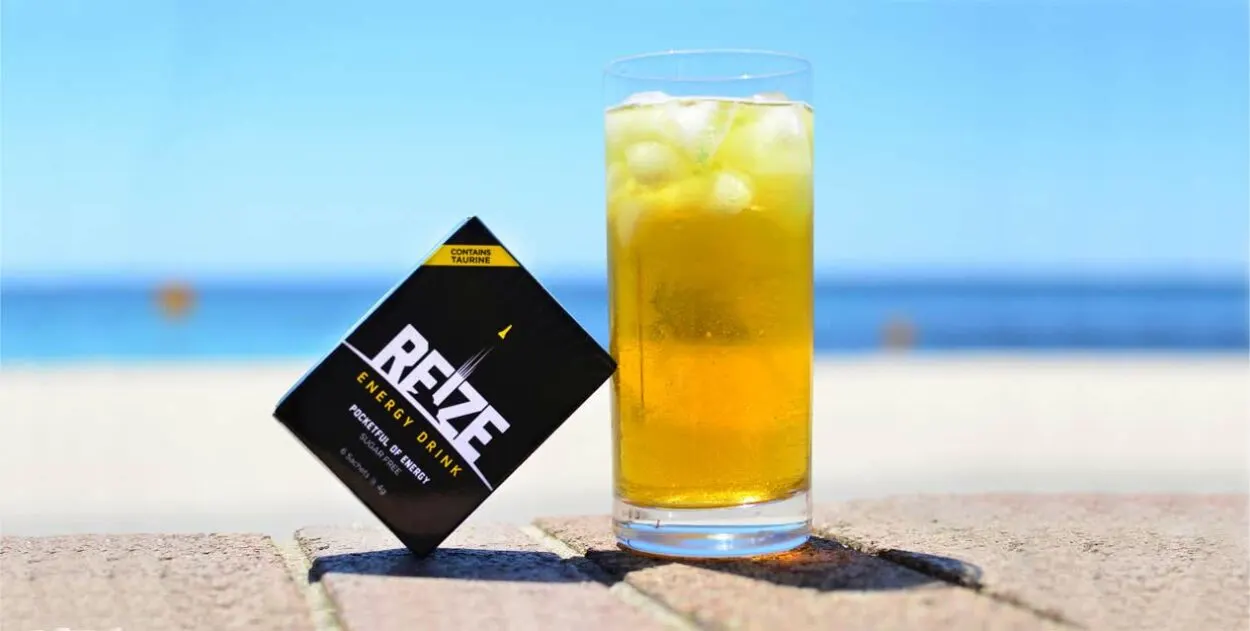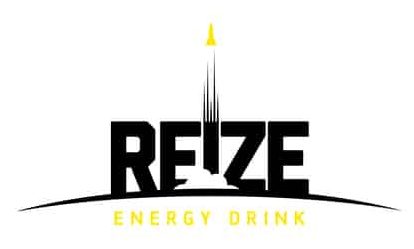3D Energy is n energy booster that’s full of flavour, caffeine loaded and lightly carbonated. With its unique proprietary blend, zero sugar and only 15 calories per can, it seeks to power you up while safeguarding your health needs too.
This beverage is made in the US and features simple yet striking colour blocks and an elegant black can top as part of its distinct product design.
But our interests go way beyond just how visually pleasing a can of 3D Energy is, of course.
What matters more is how this energy drink fares in terms of its contents and what effects it will have on your body.
If you’re curious to learn more about 3D Energy Drink ingredients, then please join me as I dive into the details of what this drink is all about.
3D Energy Drink Ingredients
Every 16 fl. oz (473 ml) can of 3D Energy contains:
- 15 calories
- 200mg caffeine
- 0g fat
- 0mg cholesterol
- 250mg sodium
- 5g carbohydrates
- 0g sugar
- 0g protein
- Vitamin D
- Iron
- Niacin (vitamin B3)
- Cobalamin (vitamin B12)
- Calcium
- Potassium
- Pyridoxine (vitamin B6)
- Pantothenic acid (vitamin B5)
It also has a 1.5g proprietary blend which consists of:
- Taurine
- Panax ginseng root extract
- L-Carnitine tartrate
- Glucuronolactone
- Inositol
- Guarana seed extract
You will also find the following in trace amounts:
- Carbonated water
- Erythritol
- Citric acid
- Malic acid
- Sodium nitrate
- Natural and artificial flavour
- Sucralose
- Sodium benzoate
- Potassium sorbate
- Acesulfame potassium
- Gum acacia
- Niacinamide
- D-Glucuronolactone
- Sodium chloride
- Calcium D pantothenate
- Pyridoxine hydrochloride
- FD&C Blue #1
- Cyanocobalamin (vitamin B12)
Just a quick note here I tried the grape-flavoured version of 3D Energy for the purpose of writing this article.
3D Energy Drink Flavours
These are the available flavours for 3D Energy drink:
- Frost
- Berry Blue
- Liberty Pop
- Citrus Dew
- Sunburst
- Cotton Candy
- Grape
- Candy Punch
3D Energy Drink Caffeine

3D Energy is infused with 200mg of caffeine per 16 fl. oz/473ml.
In my opinion, that’s actually quite a lot of caffeine for an energy drink.
I prefer to stick to 50 to 100mg per serving.
However, the amount of caffeine that each individual can handle varies greatly so what works for you or what you prefer may be different.
Whatever the case may be, please remember to drink 3D Energy in moderation and to keep within the guidelines of no more than 400mg of caffeine per day, as recommended by the US Food and Drug Administration (FDA).
Based on the daily caffeine limit suggested by the FDA, you’d be able to drink up to two cans of 3D energy drink per day.
Caffeine is a great booster for concentration and alertness and helps you to feel great even when you’re tired.
In fact, there are lots of benefits to consuming caffeine such as:
- Improving energy levels
- Helps you burn fat
- Improves physical performance
- Reduce the risk of diabetes
But while caffeine is great, you don’t want to drink too much of it either as that can cause you serious health problems like:
- Insomnia
- Digestive issues
- High blood pressure
- Atrial fibrillation
- Anxiety
- Addiction
- Rhabdomyolysis (muscle fibres that have been damaged enter the bloodstream)
How Much Taurine Is In 3D Energy?
It is hard to tell how much taurine exactly is in 3D Energy.
3D Energy contains 1.5g of proprietary blend with taurine included in it. For that reason, we can assume that the taurine in this beverage may not be enough for you to reap its maximum benefits.
However, if taurine-filled drinks are your thing, then I have a few good recommendations for you in this article.
How Much Sugar Is There In 3D Energy Drink?
There isn’t any sugar in 3D Energy.
Sugar is a great energy source, but it also has its downsides. Consuming too much sugar may cause you a sugar crash later on.
However, since 3D Energy is sugar-free, you have nothing to worry about when you drink it.
In fact, it also has only 15 calories per can. So if you’re watching your weight, that’s something you can be thankful for also.
However, in replacement of sugar, 3D Energy uses artificial sweeteners such as sucralose to enhance the drink’s flavour.
Sugar substitutes like sucralose allow you to enjoy a sweet taste but with very few (or sometimes even zero) calories. Some are even sweeter than sugar itself.
You shouldn’t worry about consuming sucralose as it is widely used in manufacturing nowadays and is generally considered safe.
In fact, some studies have even found artificial sweeteners to be helpful in treating diabetes.
How Much Does 3D Energy Cost And Where Can I Buy It?
A 16 fl. oz can of 3D Energy cost around $2.
If you’re from the US, use the Store Locator on the 3D Energy website to find the nearest store you can visit to buy 3D Energy.
You could also opt to purchase online. In the US, you can place an order for them through GNC.
Meanwhile, if you’re from the UK, you can buy 3D Energy from Predator Nutrition.
Ordering online is great in the sense that it gets sent right to your doorstep, but remember there are shipping costs to be paid too.
There’s also probably going to be a waiting period between the time you place your order and the moment when it will actually arrive, so keep all of that in mind.
Read this guide to finding cheap energy drinks.
Product Comparison
You may be wondering how 3D Energy compares to other popular energy drink brands.
Here’s a nifty table to help you see where the brand stands in terms of its caffeine and sugar content as well as its price.
| Energy Drink Brand | Volume (fl.oz) | Caffeine (mg) | Sugar (g) | Price ($)* |
| 3D Energy | 16 | 200 | 0 | $2 |
| Red Bull | 8.4 | 80 | 27 | $2 |
| Zipfizz | 20 | 100 | 0 | $2 |
| REIZE | 8.4 | 50 | 0 | $1 |
* Prices listed are approximations. You will occasionally find examples of these brands being sold for less or more than these amounts.
Since this will only be a brief discussion, I’ll be limiting our product comparison to only three other brands: Red Bull (a Ready-To-Drink option, similar to 3D Energy), Zipfizz, and REIZE (both of which are powdered energy drinks).
For the powdered energy drinks, the volume shown in the table refers to the recommended amount of liquid that is supposed to be mixed with 1 sachet/tube of powder.
Zipfizz suggests using between 16 fl. oz to 20 fl. oz of water with its powder. I have decided to take the upper limit of that range.
Caffeine
You can see from the table above that each brand has a different amount of caffeine per serving. It’ll be up to you to figure out how much caffeine you want per serving and choose accordingly.
But we have to take into account the can sizes too. If you notice, each brand is offering different volumes for sale.
Zipfizz has 5 mg/fl.oz of caffeine whereas REIZE is pretty low too, with 6 mg/fl.oz.
Sugar
All four brands have sugar-free options, which is great because you would not have to fret about facing the consequence of consuming too much sugar.
You will also avoid facing a sugar crash after drinking any of these products.
Take note though that regular Red Bull contains sugar. The sugarless options I’m referring to here are Red Bull Zero (which contains acesulfame potassium i.e. ace-K and sucralose) and Red Bull Sugarfree (which has aspartame and ace-K).
Just for your reference, the artificial sweeteners used for 3D Energy are sucralose and ace-K, whereas Zipfizz relies on xylitol and sucralose.
All these artificial sweeteners have been approved for manufacturing use by various regulatory authorities around the globe, so you needn’t worry about which ones are safe as they all are.
Price
If you’re looking for a brand that is kinder to your pocket, then you should go for REIZE which is clearly the most affordable brand listed above, shipping right to your door for only around $1 per serve.
Is 3D Energy Drink Worth Your Money?
Based on what I’ve experienced, I’d say 3D Energy has great taste and it’s a reasonable buy given its price of around $2 per can.
With 16 fl. oz per can, it’s actually a decent volume to keep you well-hydrated as well as energised.
Alternatives to 3D Energy Drink
Here are some equally great ready-to-drink options you can consider trying out:
And in case you haven’t tried them, I’d like to highlight to you the option of powdered energy drinks.
Compared to the usual canned energy drinks you’re used to buying off the shelves, these come in much smaller-sized packaging, making them more convenient to carry around.
You also have the added flexibility of mixing your energy drink powder at the concentration level you are most comfortable with (something you don’t get with ready-to-drink options.)
Besides that, you can choose what kind of beverage you’d like to enjoy your energy boost with. This could be your favourite tea, juices, or even just plain water.
If this sounds like something that you’re keen to try, check out these brands:
- Gfuel
- Zipfizz
- Advocare Spark
- REIZE (the best choice in my opinion)
REIZE (10 out of 10)

Let’s talk about REIZE for a moment. It has a lot of great nourishing ingredients such as ginseng, B vitamins, and taurine which work together with its sensible caffeine content to give you a really nice energy boost that lasts for hours.
REIZE also offers you greater versatility. You can choose to mix it with water, soda, or even your favourite juices.
Perhaps best of all, REIZE ships straight to your doorstep for only around $1 per sachet. That’s including shipping costs!
Give REIZE a try today and see if you agree with me that it’s better than 3D Energy Drink.

